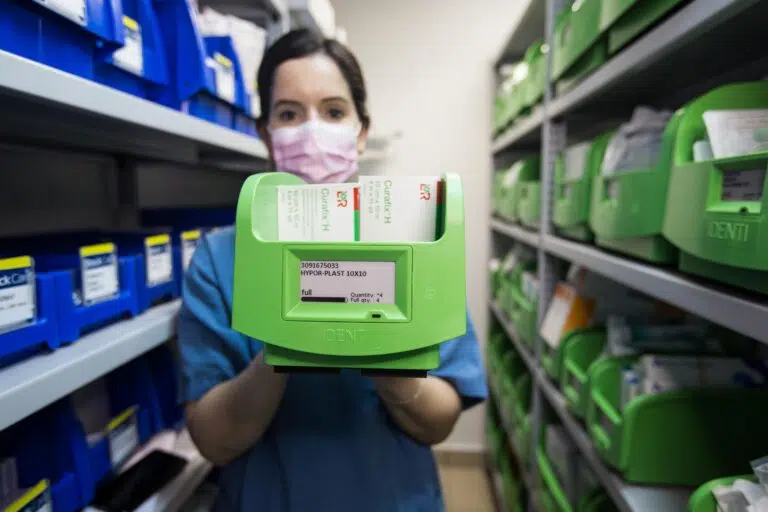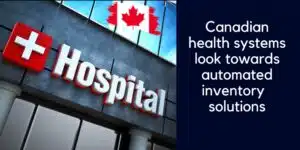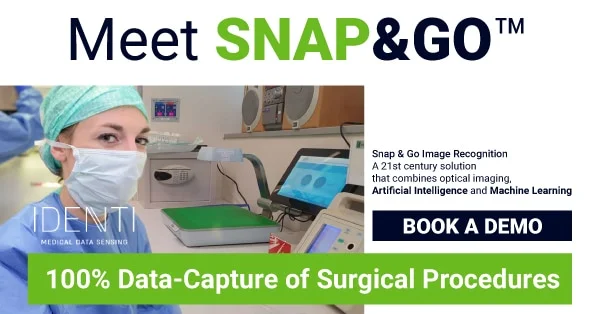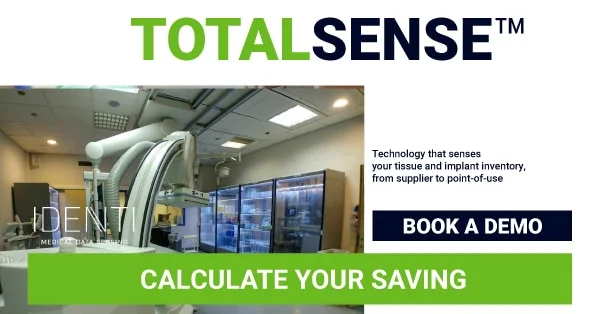What’s inside:
Canadian health systems need to improve their data integrity in order to improve performance and plan for the future.
This article looks at:
- How data collection and information-sharing are seen as the way forward for healthcare supply chain management
- Common data integrity challenges in provincial health systems in Canada
- Item tracking and management in Canada’s healthcare system
- Point of use data collection problems in Canada’s hospitals
- Health tech solutions for improved hospital data capture and analytics
The Canadian healthcare system needs better data collaboration and more joined up thinking, according to a recent article in Canadian Healthcare Technology magazine.
The article discusses how supply chain disruptions could be better managed with improved vision across the provinces. The Supply Chain Management Association of Ontario (SCMAO) is promoting two recommendations to tackle the current supply chain challenges:
- The setting up of a task force to look at improved information sharing between supply chain partners. This will ensure better, more informed decision-making during supply chain disruptions.
- The implementation of improved informatics and data analytics that are able to track supplies across provinces.
But while data sharing and increased trust is certainly a big step forward, it’s also important to recognize the starting point of many Canadian healthcare providers.
Improving data capture and collection in provincial health systems
It’s great to think big, but it’s also important to stay real.
Many healthcare services in Canadian provinces have work to do on their local data collection, before they can even think about data sharing on a provincial or national level.
Scott MacNair, EVP of Business Operations at the Provincial Health Services Authority in British Columbia is quoted in the article as saying:
“What really needs upgrading in BC is the informatics infrastructure, as the lack of good computer software is impeding the collection, analysis and sharing of data.”
Scott also touches upon the starting point for many healthcare organizations when he says,
“Some parts of the supply chain system in BC are still working on Excel spreadsheets. We shouldn’t be doing that. We’re very archaic.”
In the article Mark Walton, SVP with Ontario Health, agreed:
“ .. the healthcare system suffers from a shortage of data about supply chain issues, and.. more work should be put into building the relationships and resources needed to obtain and analyze critical information.”
He then highlights a couple of weak links in the chain,
“We have poor supply chain data, especially in areas like DI and surgery that are flashpoints for the public.”
The surgery setting is indeed a common failure-point for many Canadian health systems, and it impedes the capture and analysis of full and accurate supply chain data.
Improving hospital-level supply chain data
Hospital logistics staff are unable to go into procedure rooms or ORs. It is therefore nurses who are tasked with managing medical inventory ‘behind the red line’ – and they certainly feel the burden of this task.
Nurses commonly feedback a range of supply chain data issues:
- Lack of inventory vision – resulting in regular ‘inventory hunts’ on the shelving of their cabinets and across other departments, trying to locate particular stock items.
- Expired items – finding batches of items that have expired on the shelves.
- Stock outs and surpluses – ‘best guest’ restock orders are inaccurate and nurses don’t feel that they can rely upon all items being available when required.
- Difficulty digitally documenting the items used in surgery – due to manual data entry systems, a reliance upon inadequate data-capture tools or systems that fail to identify every item entered.
Just these issues alone can be seen to create inefficiency.
- Busy nurses are wasting far too much time on supply chain activities.
- Inventory wastage is unnecessarily high.
- Compromised patient safety and inaccurate billing are the fallout of incomplete patient charting during surgery.
These are all internal issues, and it is clear that if an organization is struggling at this level, then it is in no position to be sharing its data with other organizations.
So, the first priority is to achieve full inventory and usage data – and this will achieve a clear picture of what is going on.
Luckily there are some excellent health-tech solutions that can easily achieve the perpetual item tracking required.
Item tracking and management in surgical spaces
RFID smart cabinets offer healthcare providers precise tracking of their medical devices, implants and consumables. A good smart cabinet, such as the Total Sense cabinet, is able to provide real-time data on stock levels, as well as data on the items removed. It can also monitor product integrity (supporting prompt expiry management).
Total Sense clearly shows staff where to find each item they require, making the preparation of each surgery’s pick list a quick and simple task.
Total Sense RFID cabinets are connected to cloud software which provides real-time metrics, reports and data insights. This inventory data helps materials managers to gain full inventory vision and order only those items that are required. This access to current data helps materials managers to prevent item wastage, streamline the inventory and reduce costs.
Finally, with full and accurate data, they have the power to control and manage their medical inventory.
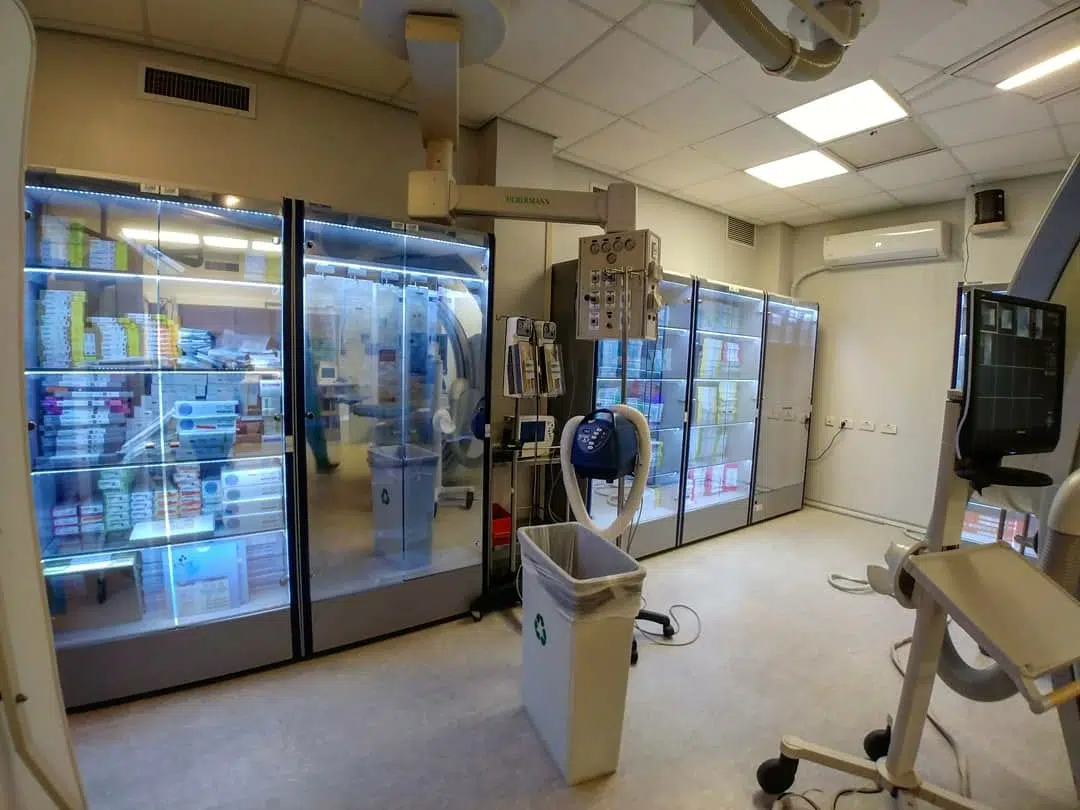
Find out the ROI for your hospital of installing Total Sense Smart Cabinets.
So, RFID cabinets provide a great solution for stock visibility and control, but can it be assumed that all items removed from the cabinet were actually used?
The fact is that there is a missing piece of the puzzle in many Canadian healthcare data infrastructures.
Data integrity at the point of use
Digitally documenting all billable items in surgery should be a fairly routine task, but the fact is that there are many hurdles for nurses to jump over if they are to successfully record utilization.
The first barrier is often the limitations of the hospital’s own system. In order for any item to be recorded, it first needs identification, and this is carried out using the hospital’s source of truth – often an Item Master. With hundreds of thousands of items on many Item Masters, keeping the data up to date is an almost impossible task. When items scanned during surgery don’t find a match in the Item Master a system error occurs that will trigger an often manual, long-winded workaround.
Once routine item capture fails at the point of care, the risk of non-documentation increases.
And this is a disaster.
- The patient chart is incomplete.
- The medical billing is incorrect.
- Patient safety is compromised.
Many surgical data-capture tools, such as barcode scanning are ineffective, and it is the introduction of new technology which is finally changing the game.
Until now, all point of care data-capture tools regularly struggled to capture item UDI coding and even when successful, they were reliant on the hospital’s Item Master for product identification.
With supply chain disruptions leading to a much larger supplier base and range of products, hospitals are struggling to maintain their Item Master, and this is having a knock-on effect in surgery and procedure rooms – with many items regularly having to be manually input after non-recognition by the hospital system.
During surgery nurses need to focus on patients not products. Supply chain data capture failures result in convoluted workarounds that nurses simply don’t have the time for. With staff shortages common across Canadian health systems, and everyone carrying a heavier load, the issue is reaching a critical point. Many hospitals recognize the issue of poor data-integrity in surgery and are having to routinely audit the surgical records of high value cases in an effort to identify inaccurate entries or missed items.
There’s got to be a better way.
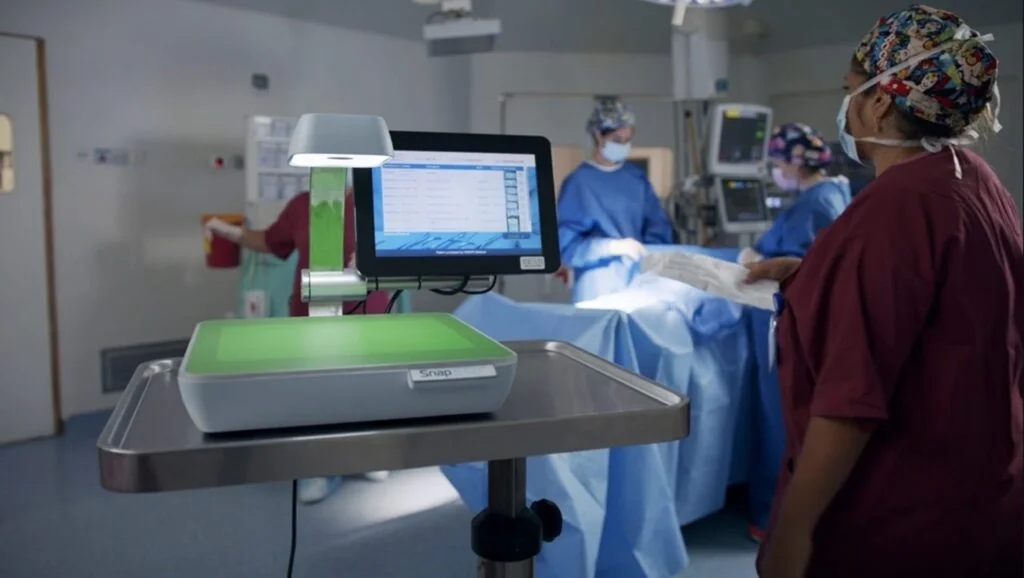
New technology is providing a fresh solution to the common issue of inefficient data collection at the point of care.
‘Snap & Go’ uses image-recognition technology to capture individual items in just 3 seconds.
The AI managing software then automates the identification and documentation of each item.
The system taps into a global SKU database and does not rely on the hospital’s items master to identify the item. It can therefore accurately identify nonstock items, substitutes, trunk stock, last minute orders etc. – all those tricky items that regular systems struggle with.
New healthcare technology is reducing the supply chain workload for busy nurses while at the same time improving the speed and accuracy of surgical data-capture.
See how ‘Snap & Go’ works on our video.
The future of Canadian healthcare is all about data – achieving accurate organizational information and looking towards national data-sharing.
If your data-collection and analytical system is not future-fit, now is the time to invest in technology.
Contact us to improve data integrity in your Canadian healthcare surgical and procedural spaces.

